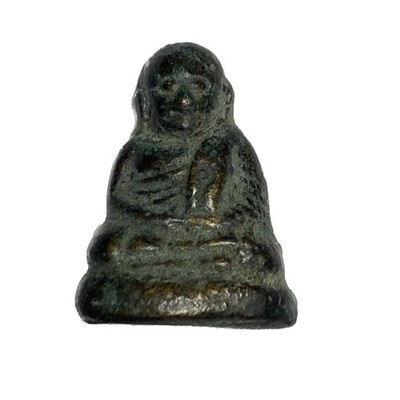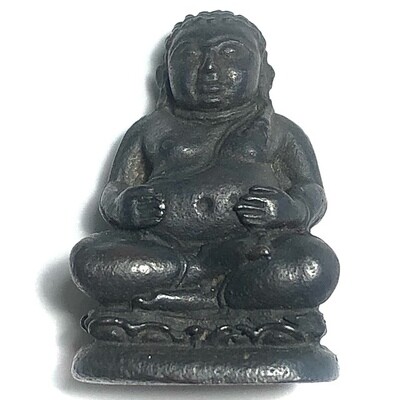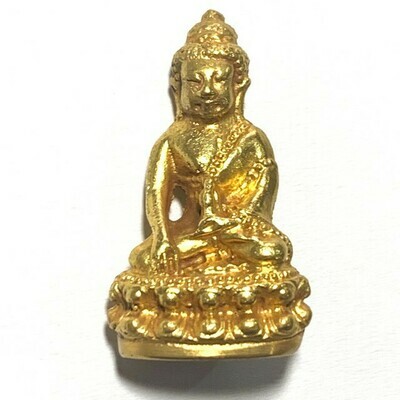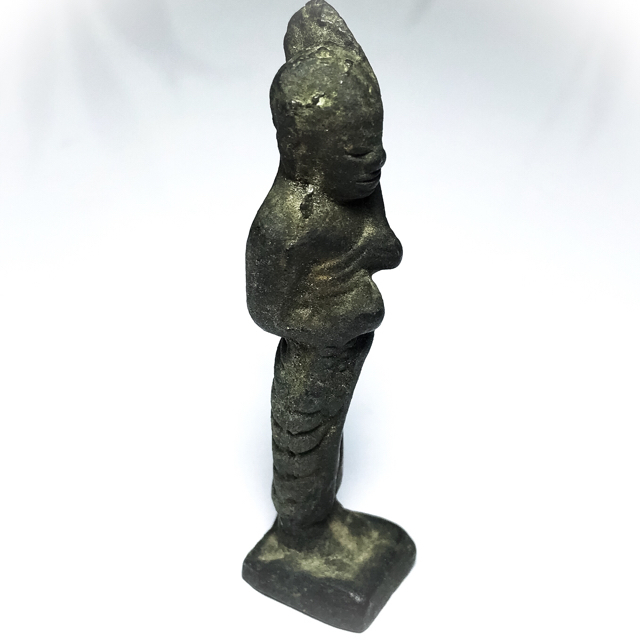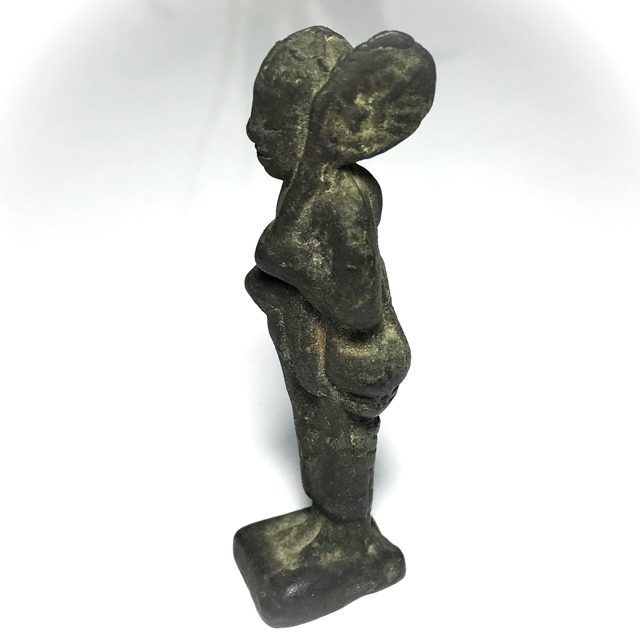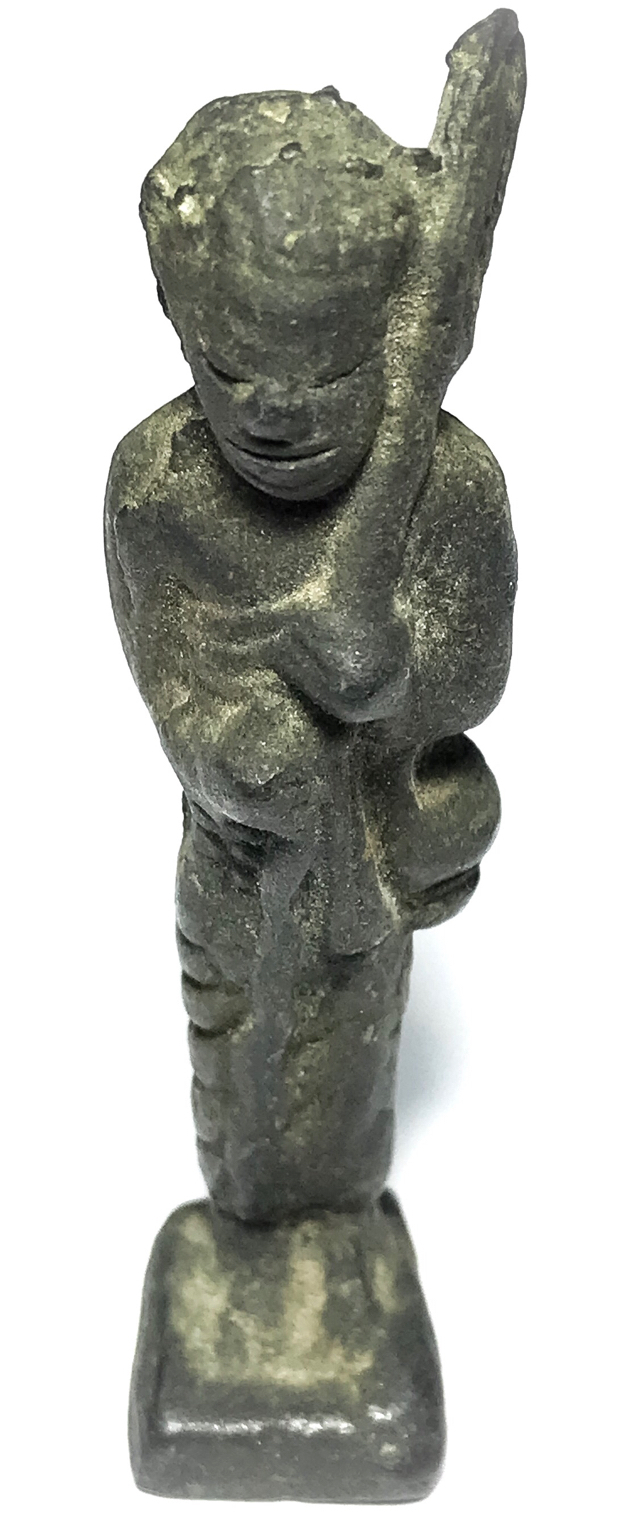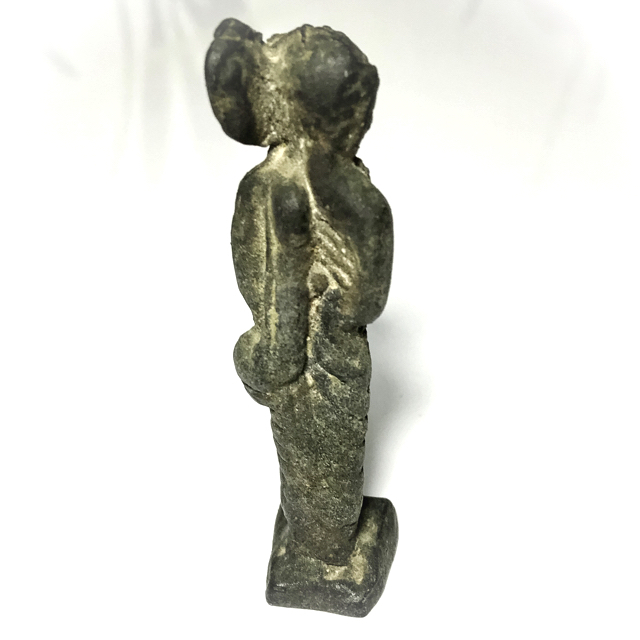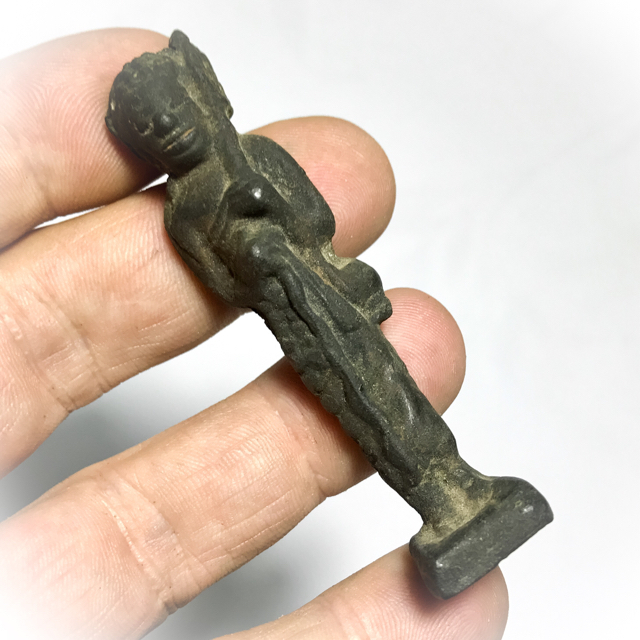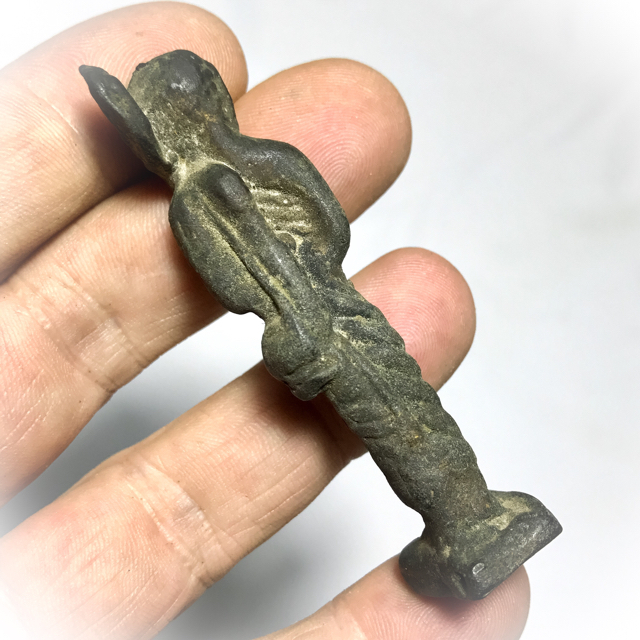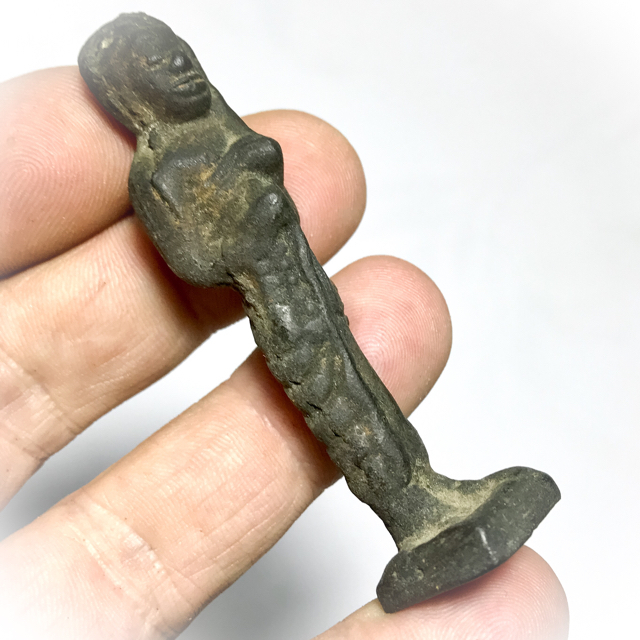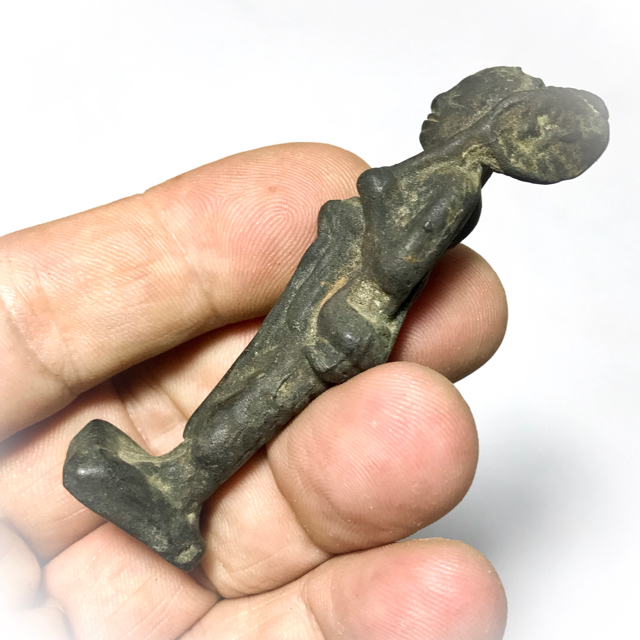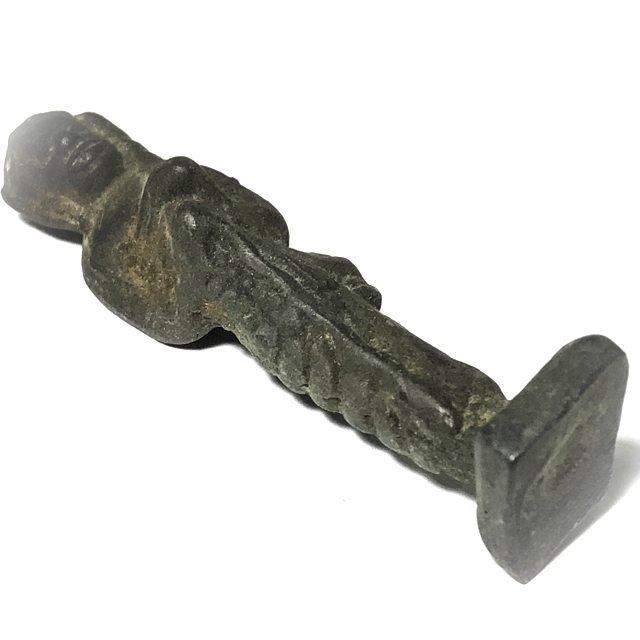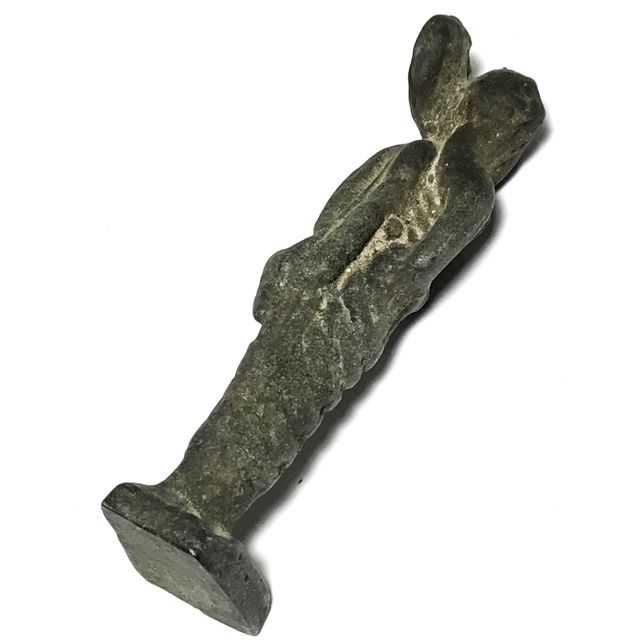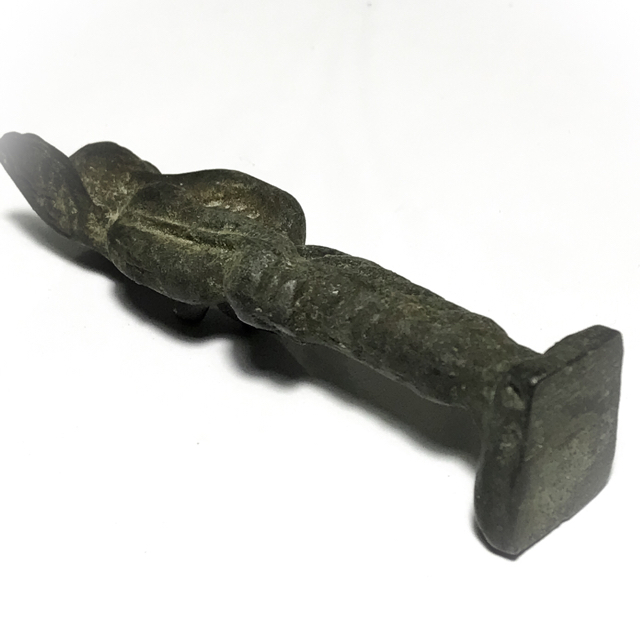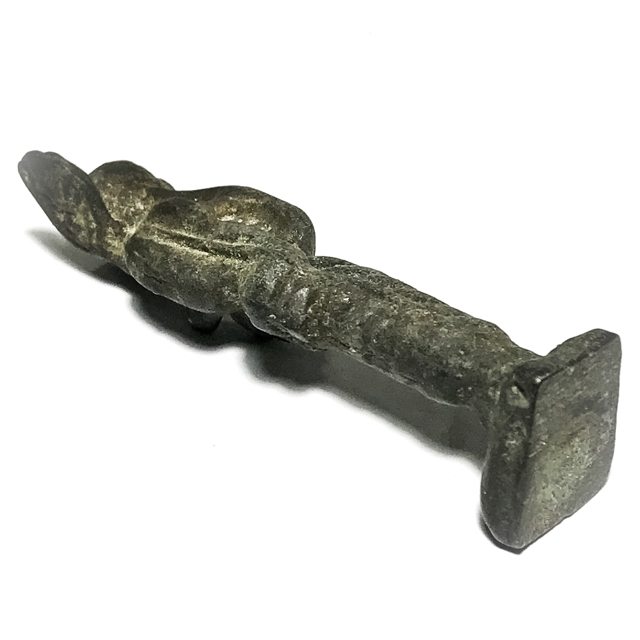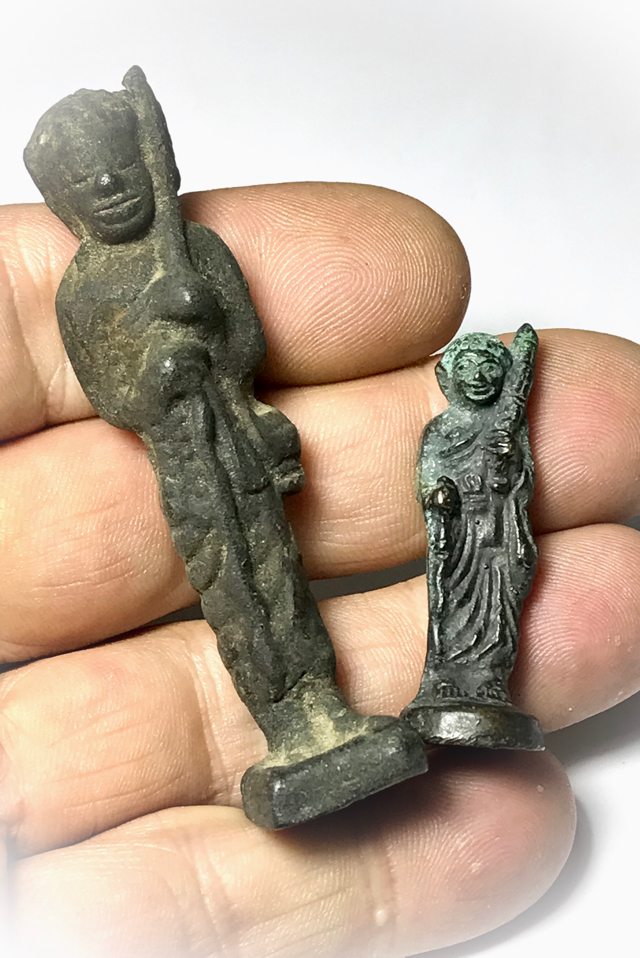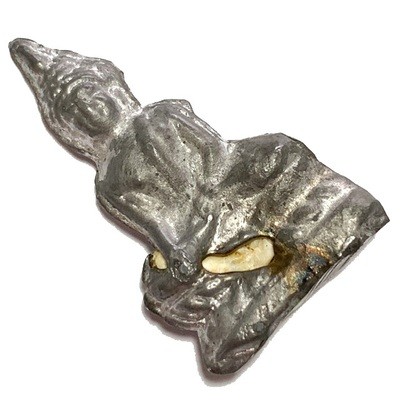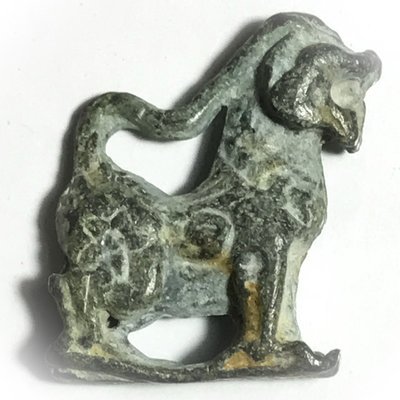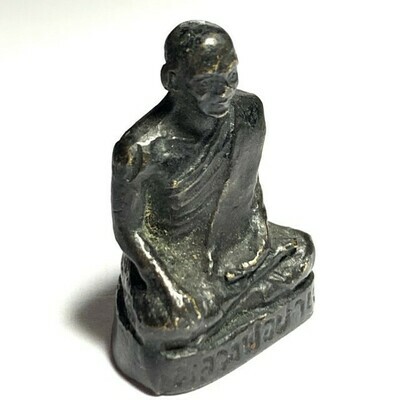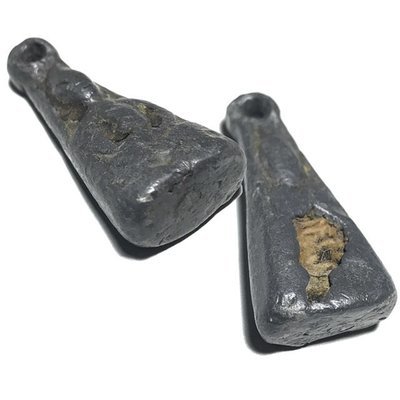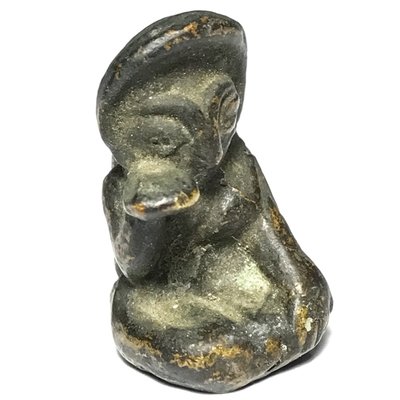
Ancient Amulet Store – Purveyors of preferred Classic Thai Buddhist Amulets for the True Devotee and Distinguished Collector
Discover the immensely deep and fascinating world of Vintage Thai Buddhist Amulets. Ancient Amulet is a long term established and internationally recognized Vintage Amulet Shop, and A Trusted Source for Classic Thai Buddhist Amulets for Devotees and Discerning Collectors, and is one of the many sub projects of informational sources created by Thai Amulet, Buddhism and Thai Occult Expert, Ajarn Spencer Littlewood . as part of his ‘Buddha Magic Project‘
Ancient Amulet provides authentic Antique and Rare Thai Amulets of the Pre and Early Post-Modern Era, of high esteem and Sacred Value, to revere, study and collect. Our Ancient Thai Buddhist Amulets are selected from the finest exhibits we can discover, and given diligent study and authentication processes. Our collection showcases time-honored amulets crafted by ancient masters, boasting captivating qualities and representing the esteemed Pra Niyom class. We offer authentic, highly valued ancient Thai Buddhist amulets from the pre and early post-modern eras, carefully selected from the finest exhibits and thoroughly examined. We invite you to study, revere, and collect these classic amulets from ancient masters, and to learn about their magical aspects and the art of amulet evaluation
Roop Lor Pra Sivali Maha Thera 2495 BE 3 Inch High Bucha Statuette - Luang Por Chaeng Wat Bang Pang
Pra Sivali ancient cast brazen statuette in Nuea Tong Pasom Sacred Brass, from the year 2495 BE, from one of the Great Guru Masters of the World War II and Indo-China Wartime Era, Luang Por Chaeng (2428 - 2500 BE), of Wat Bang Pang.
The Pra Sivali of Luang Por Chaeng is considered to be his most popular amulet in present times, after the Pra Kring, and his famous Buddha riding animals Muan Sarn Sacred Powder amulets, both of which are extremely rare, leaving the Pra Sivali and the Ganha Chali, which are also fast disappearing from the public auctions, as devotees and collectors father the last remaining examples
The statuette measures 3 Inches High, and is intended as a Mini Bucha Statue for placement on the altar, dashboard of vehicle, or in the place of business, but is still within the size possible to encase and wear as a large amulet if preferred.
Pra Sīvali (Thai: พระสีวลี - Chinese: 尸婆羅) is an Arahant widely venerated among Theravada Buddhists. He is the guardian saint of travel and is believed to ward off misfortunes at home such as fire or theft.His veneration predates the introduction of Theravada Buddhism into Burma. Sīvali is typically depicted standing upright and carrying a walking staff, an alms bowl and Buddhist prayer beads. Born to Queen Suppavasa, Sīvali is believed to have remained in his mother's womb for seven years because of past karma.
After a week in labor, Sīvali's mother gave birth to a precocious boy who could immediately speak. Thereafter, Gautama Buddha's chief disciple, Sariputra, admitted Sīvali into the Sangha. Burmese Buddhists believe that he is still living, that he can be invoked to come by a special incantation and that his mere invisible presence will bring them prosperity and good fortune.
Biography of Luang Por Chaeng Sīlapanyā, of Wat Bang Pang
Luang Por Chaeng, Silapanya was born on a Friday on the 18th December 2428 BE. He was ordained in 2440 at the age of 12 as a Samanera Novice Monk, and remained ordained until the age of 20, when he was then ordained up one level to the status of a fully fledged adult Bhikkhu Monk.
Luang Por Chaeng was a Pra Gaeji Ajarn Master Monk of the second World Wartime, of great importance in Thai History. He was highly reputed Master of Vipassana Kammathana practice, whose Mastery was heard of far and wide.
Luang Por Chaeng was the second abbot of Wat Bang Pang, in Nontaburi, Bangkok, after his predecessor Luang Por Pra Atigarn Jaroen. His powerful psychic abilities to empower amulets was highly reputed within the Sangha on a National Level, and he was always an invited member of the greatest and most important 'Putta Pisek' (Buddha Abhiseka) blessing ceremonies in History, including the Great HIstorical Ceremony of empowerment of Magical Protective Yantra cloths and 'Suea Yant' Yantra shirts for the Thai Military.
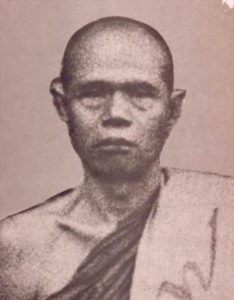
In the times of the second world and Indo-China wars, there were a few great Monks who stood out above all others for their Kong Grapan Chadtri, Klaew Klaad and Maha Ud Magic, whom the Thai Buddhist Folk of all Provinces knew and revered, no matter how remote the village. These great wartime Era Monks of great Magical Power were of course, Luang Por Jong, of Wat Na Tang Nork in Ayuttaya, Luang Por Jad of Wat Bang Grabao Luang Por and the great Luang Por Chaeng, of Wat Bang Pang, Luang Por Juan, and Luang Por Opasi
During the Indochina War, the Thai Military was ordered into battle, and a great ceremony to make Pha Prajiad Sipsee Pan Tong of Luang Por Chaeng, and Yantra Shirts of Luang Por Jad to protect them in the War, was held with a great blessing ritual, empowered by four of thee great monks, Luang Por Jong, Luang Por Chaeng, Luang Por Jad, and Luang Por Chuan.
The famous Pha Yant Prajiad were given to some soldiers to test with three point blank range shots, all of which failed. these Yantra cloths of Luang Por Chaeng, and the Yantra Shirts of Luang Por jad (Wat Bang Grabao) were worn into battle, and became the famous story of the French Military seeing Thai soldiers shot with bullets, who were knocked to the ground by the bullets, and immediately stood up again and went back into battle as if nothing had hit them. The French Military then called the Thai Military 'Taharn Phi' (Ghost Soldiers).
Luang Por Chaeng held the Wicha of a number of Kroo Ba Ajarn, who bestowed him with their lineage secrets, including the Great Luang Por Parn of Wat bang Hia (Wat Klong Dan), ;ph Khai of Wat Cherng Lane, Luang Phu Chay of Wat Panan Cherng,, Pra Kanajarn Say (Luang Por Say), Luang Phu Sukh, of Wat Pak Klong Makham Tao, Luang Por Parn of Wat Bang Nom Kho, and the Great Luang Por Jong of Wat Na Tang Nork.
As Luang Por Chaeng was alive and abbot of Wat Bang Pang, he would receive many devotees each day with numerous requests, none of whom he would refuse. Some would come for Blessings, some for Amulets, and others to heal their Illnesses, and some devotees who had heard of his Magical Prowess, came to beseech the secrets of his Wicha, to become Sorcerors themselves, and help those in their hometowns.
Luang Por Chaeng would bless, distribute amulets, and heal his devotees without exception. As to those devotees who beseeched apprenticeship to learn to cast spells with Kata Akom Incantations, Luang Por Chaeng would always first make the Looksit learn to develop their meditative skill, and to allow them to develop moral fibre and the five precepts. Only then, when they had risen above the base temptations, would he allow them the secrets of the Incantations, their sequences and methods. He would teach his students how to cure ailments and banish curses, and expunge ghosts and spirits from possessed souls.
Luang Por Chaeng had a great respect for Luang Por Parn of Wat Bang Nom Kho, and had received a lot of influence from him in the art of amulet making. So when he would make his amulets, he would often make models which resembled and paid reverence to the famous Pra Pim Pra Putta Jao Pratap Sadtw Buddha riding Animals amulets. He made original designs which resembled those of Wat Bang Nom Kho, with differences in design to distinguish them. This caused his amulets to become very popular, as this was the preferred type of amulet at the time in Central Thailand.Luang Por Chaeng made a large number of different amulets, ranging from the Buddha riding animals, and other sacred powder amulets in many forms, in small (Pim Lek), medium (Pim Klang) and large (Pim Yai), Monk Coins, the world famous Pha Yant Tong Yantra Flags, Sai Sek blessed sandgrains, the highly preferred and now rare Pra Kring, and Pra Chaiyawat Loi Ongk Statuettes, Pra Prajam Wan (Birthday Buddha amulets), Nang Kwak beckoning lady, Pra Putta Kwak beckoning Buddha, Pra Sam Lia, (triangular amulet), and of course, his famous and extremely popular Pra Sivali metallic Loi Ongk Statuette amulets, which were made in ancient casting methods, in various forms and sizes, for Bucha on the altar as well as for wear as amulets.
His sacred powder amulets were made from a number of different Muan Sarn substance clays, including Puttakun (Yantra Powders), Nuea Din (Earthen Clay), and Pong Nam Man (Oily Herbal Powders). The amulet appreciation society and the aficionados tend to prefer the Pong Nam Man Oily powder models above the other Muan Sarn Sacred Powders, but there is not a very large difference in their price compared to the difference in their rarity.
In the year 2484 BE, Many devotees gathered to officially ask Luang Por Chaeng to make some powerful amulets to protect them during the War. So Luang Por Por Chaeng made a very large release of amulets of different types, with extreme power and effort after many years of preparation.
He empowered them for Kong Grapan Chadtri Klaew Klaad and Maha Ud to protect the Thai Buddhist people, in that time of Wars around South East Asia and the whole World. None of the multitudes of amulets blessed in the ceremony were rented out for money, instead, all were handed out for free to the devotees at the ceremony.
The Buddha riding animal amulets of Luang Por Chaeng are used as a second choice for those who do not possess the funds to obtain a Luang Por Parn Wat Bang Nom Kho model, and are said to be equally powerful protective amulets.
Luang Por Chaeng did not bake the clay in his edition, preferring to make them from an admixture which contained Poon Plueak Hoi (ground seashell), which results in a smoother and lighter colour and texture than Luang Por Parn's clay models. Otherwise, his powder amulets contain the same 5 Sacred Yantra Powders Pong Bpathamang, Pong Puttakun, Pong Ittijae (sometimes called 'Ittajae'), Pong Trinisinghae, and Pong Maharach. Luang Por Chaeng's formula also included Gesorn flower pollens, Sai Sek enchanted sand, Khaw Suk cooked rice (from monks almsbowls)
Luang Por Chaeng passed away peacefully on 26th July 2500 BE at the age of 72 years old, after 52 years in the ordained Sangha. His body was cremated in the year 2501 BE after being moved to Wat Makut Kasatriyaram. A series of 'Rian Khaw Hlaam' four sided Monk coins with the image of Luang Por Chaeng were handed out to the devotees during the cremation ceremony as a sacred memento of Luang Por Chaeng.
His Pra Sivali statuettes have become a classic amulet, and are in ever sense a sacred religious artifact of the pre 2500 BE Era, that can be treasured and revered for generations to come. A truly sacred ancient amulet from one of the most powerful masters of the World War II Era.
Luang Por Chaeng was an important monk present called for the empowerment of amulets in many great ceremonies, particularly notable the Wat Rachabopit Indojin Ceremony of 2481 BE, considered to be the largest Blessing Ceremony of all History., the 25 Centuries of Buddhism Ceremony of 2500 BE (second of three largest ceremonies in History) and his presence was beseeched to assist in empowering the world famous historical edition of Pra Kring Wat Sutat.
Various Kata Bucha Pra Chimplee (Pra Sivali)
Ahang Wantaami Siiwaliitaadtuyo Ahang Wantaami Sappaso
Kata to Bucha Pra Sivali
Iminaa Saggaaraena Siiwalii Thaerang Apibpuchayaami
(When you chant this whilst making Bucha to Pra Sivali, then say in your inner heart
silently the following words;
Bpuchidtang Sappalaapang Bprasitti Mae Thaerassa Aanupaawaena Sappa So Thee Pawandtu Mae
Kata Pra Sivali (Luang Por Guay – Wat Kositaram, Chaynat)
Siiwalii Ja Mahaa Thaero Bpajjaya Laapa Buchidto Manusso Taewadtaa Into
Pramaayamo Yagkha Waa Bpidtassa Nirandtarang Bpana Laapa Saggaarae
Aanaendti Nijjang Siiwalii Thaerassa Laapo Saggaaro Hodti Siiwalii Mahaa Thaeran
Ja Buchagassa
Sataawaabi Kaatanja Sangwadt Dtanassa Laapo Ja Saggaaro Hodti Thaerassa
Aanupaawaena Laapo Mae Hodtu Sappataa Aedtaena Sajja Wachaena Laapo Mae
Hoedtu Sappataa
Kata for chanting when going on Business trips
Na Chaa Liidti Bpasitti Laapaa
Kata Hua Jai Pra Chimplii (heart Mantra of Pra Chimplii)
Saatu Siwalii Ja Mahaa Thaero Na Chaa Li Dti Bpasitti Laapaa Bpasanna Jidt DtaaSataa Hondti Bpiyang Ma Ma Sappae Chanaa Pahu Chanaa Sappae Tisaa Samaa Kadtaa Gaala Pochanaa Wigaala Pochanaa Aakaj Chaaya Aakaj Chaahi Bpiyang Ma Ma
Short Kata Pra Sivali
Siiwalii Ja Mahaa Thaero Chay Ya Sitto Mahit Tigo Thaerassa Nupaawaena
Katas for Pra Sivali for each day of the week
Sundays (Chant 6 times) – Chimpalii Ja mahaa Naamang Sappa Laapang Pawissadti
Thaeras Saanupaawaena Sataa Hondtu Bpiyang Ma Ma
On Mondays (Chant 15 times) – Yang Yang Bpuriso Waa Idthii Waa Turaehi Waa
Sami Bpaehi Waa Thaeras Saanpaawaena Sataa Hondti Bpiyang Ma Ma
On Tuesdays (Chant 8 times) – Chimpalii Ja Mahaa Thaero Soho Bpajjayaa Timhi
Chaeya Laapo Mahaa Laapo Sappa Laapaa Pawandtu Sappataa
On Wednesdays (chant 17 times) Tidt Dtidt Tha pa Wae Rachaa Biyaa Ja kara Dtu
Mae Yae Saaradt Dti Niran Dtarang Sappa Sukhaa Wahaa
On Thursdays (Chant 19 times) – Chimpalii Ja Mahaa Thaero Yagkhaa Taewaa Pi Bpuchidto Soraho Bpajjayaa Timhi Ahang Wantaami Sappataa
On Fridays (Chant 21 times) – Chimpalii Ja Mahaa Thaero Taewadtaa nara
Bpuchidto Soraho Bpajjayaa Nimhi Mahaa Laapang Garondtu Mae Laapaena Udt
Dtamo Hodti Sappa Laapang Pawandtu Sappataa
On Saturdays (Chant 10 times) Chimpalii Ja Mahaa Naamang Intaa Prahmaa Ja
Bpuchidtang Sappa Laapang Prasitti Mae Thaeras Sanupawaena Sataa Sukhii
Bpiyang Ma Ma
Luang Por Chaeng made his Pra Sivali amulets in various shapes and sizes, of which you can see two examples in the below picture, large and small, with differing features.
Ancient Kata for Pra Sivali
“Saatu Siwalii Ja Mahaa Thaero Ugaasa”
(Say in your heart) “May the magical powers of luck and fortune of Pra Sivali Thaera be installed within my perception, mind and body. As Pra Sivali was often a safe refuge for the Buddha, the Arahants and the 4 thousand Dhamma Khandas, thus so shall Pra Sivali Thaera be my refuge. May his immense power of Metta Mahaniyom and Choke Laap Saggaara generate riches and good fortunes in life, For absence of material things leads to physical suffering and plight”.
